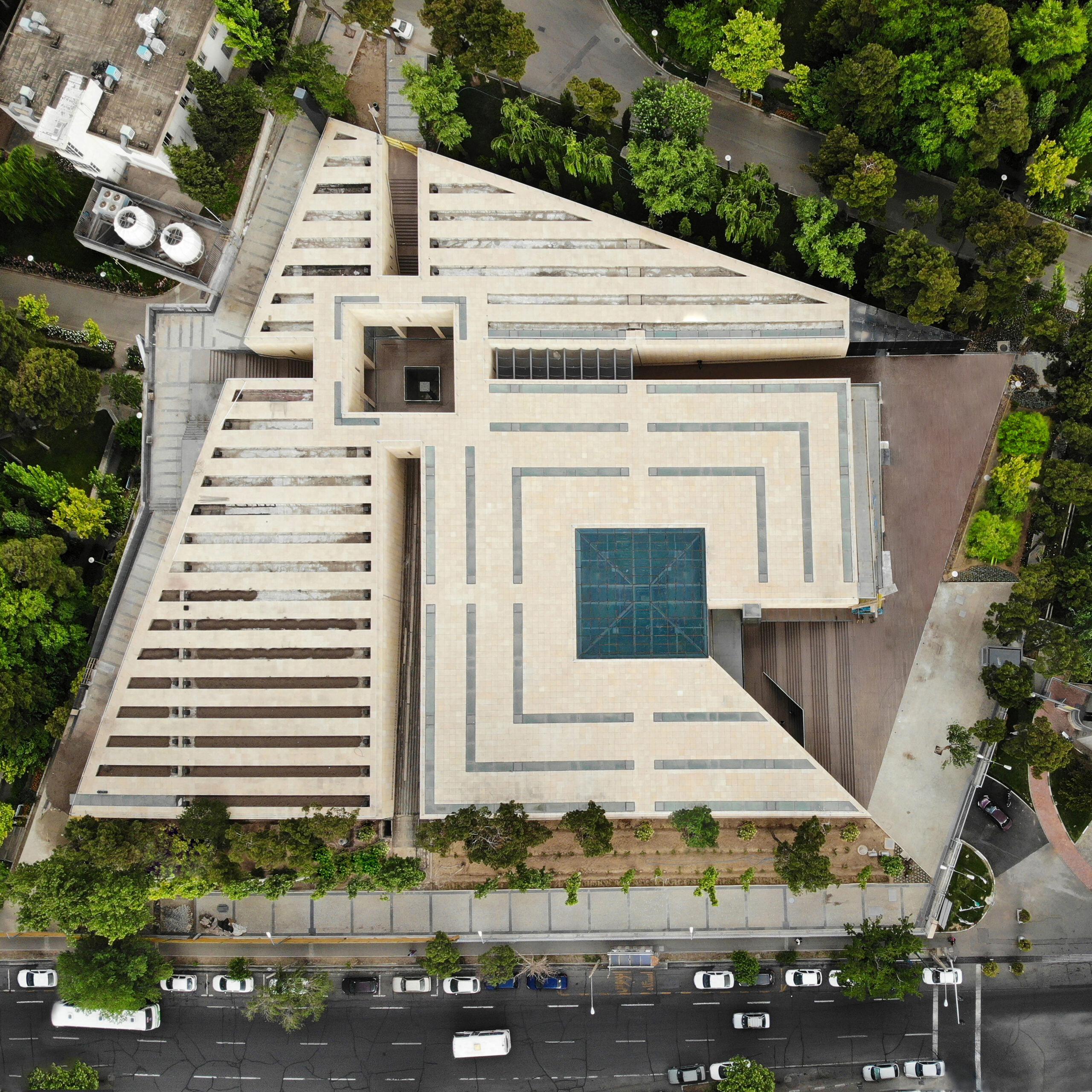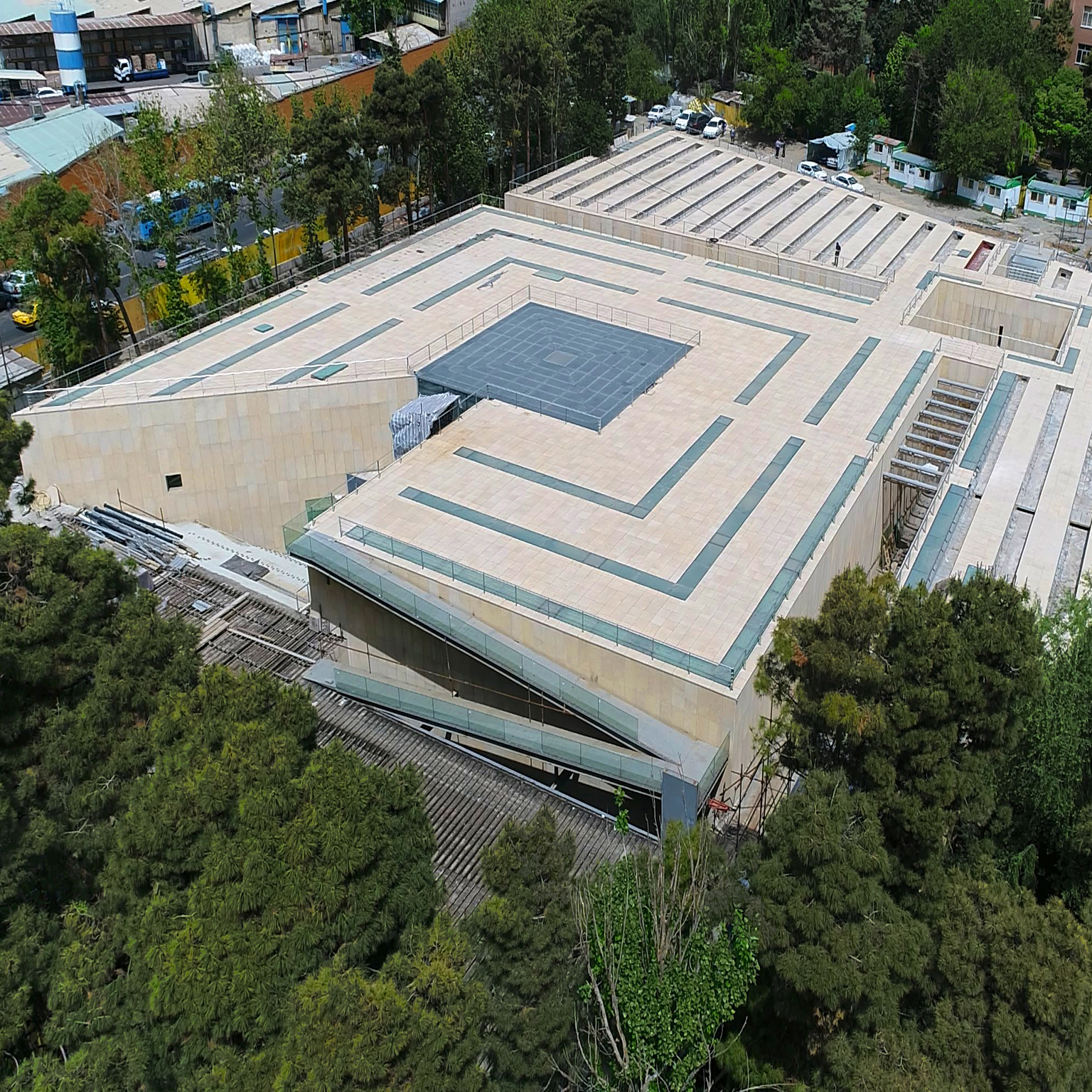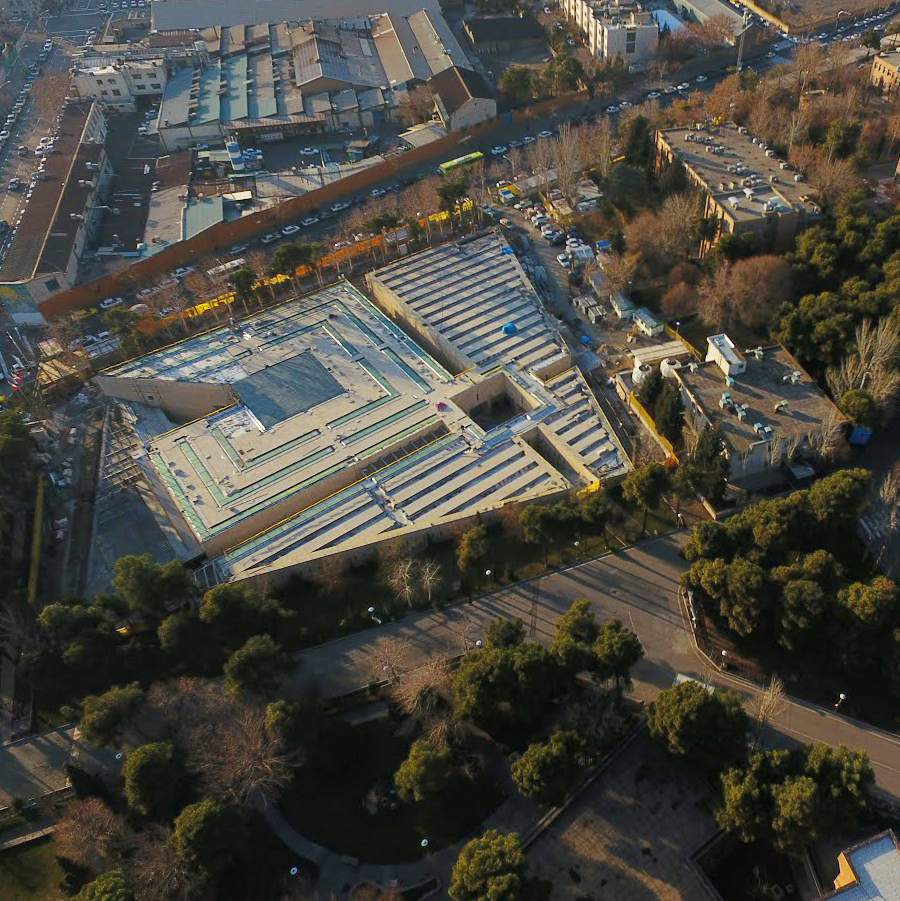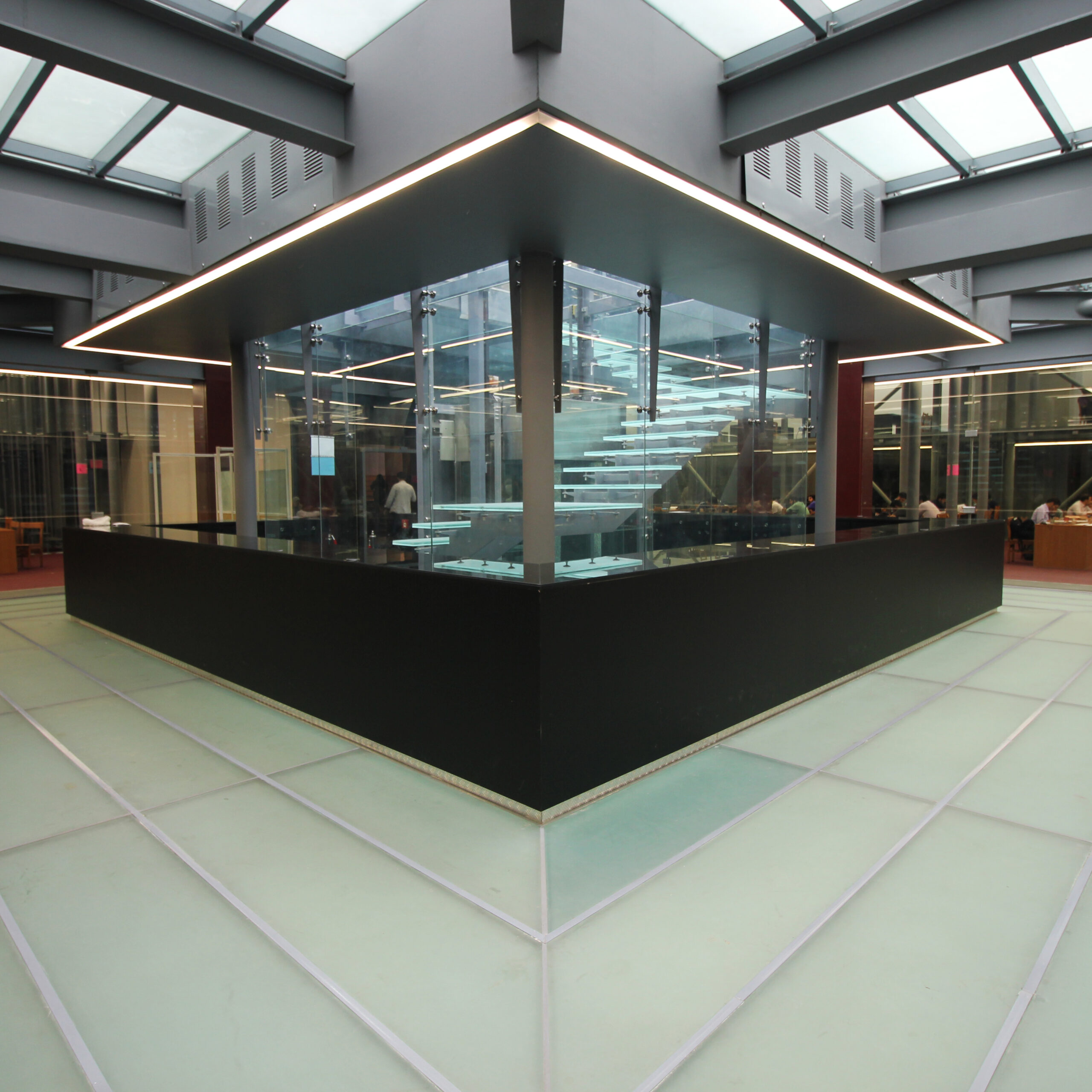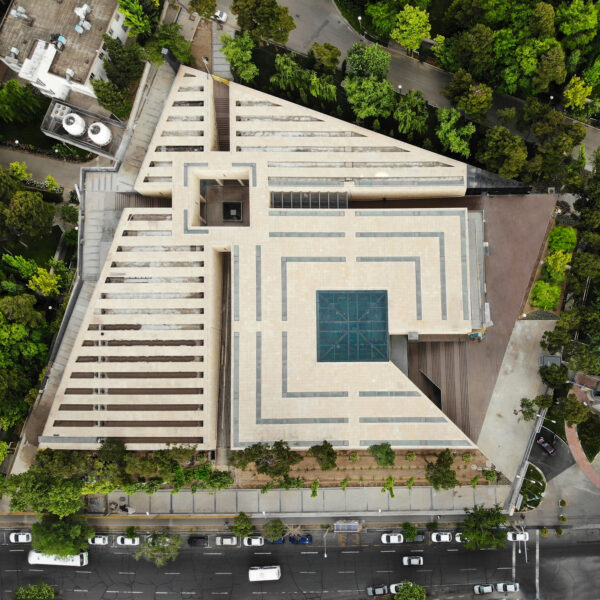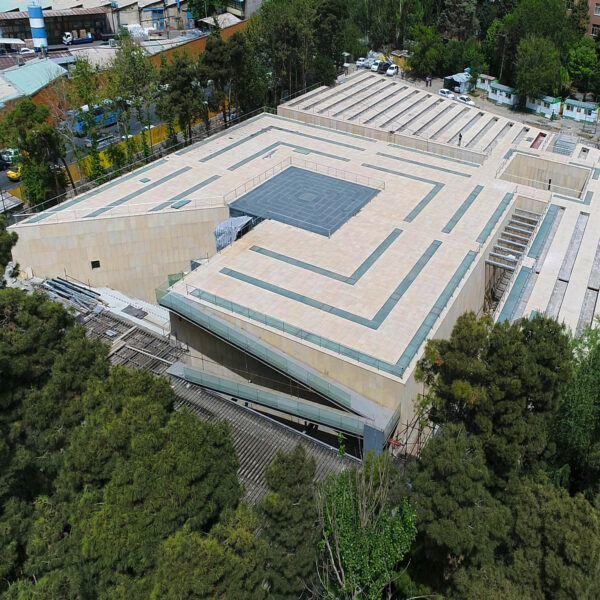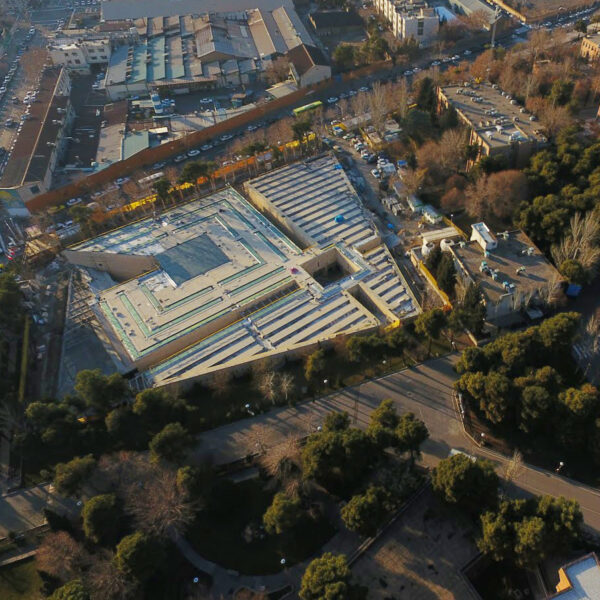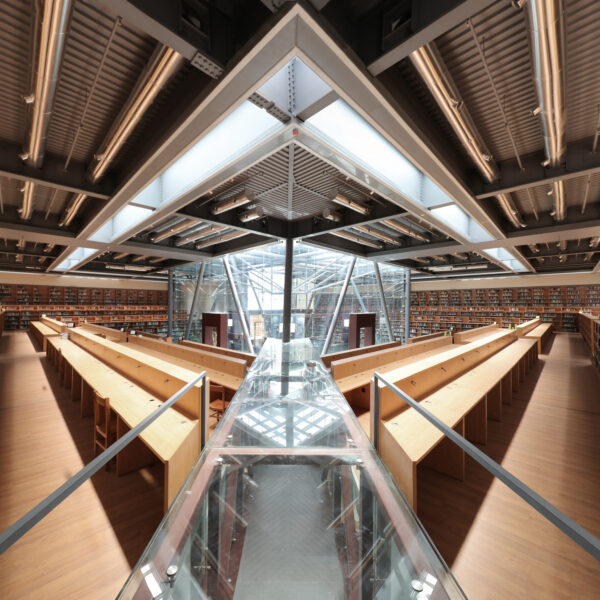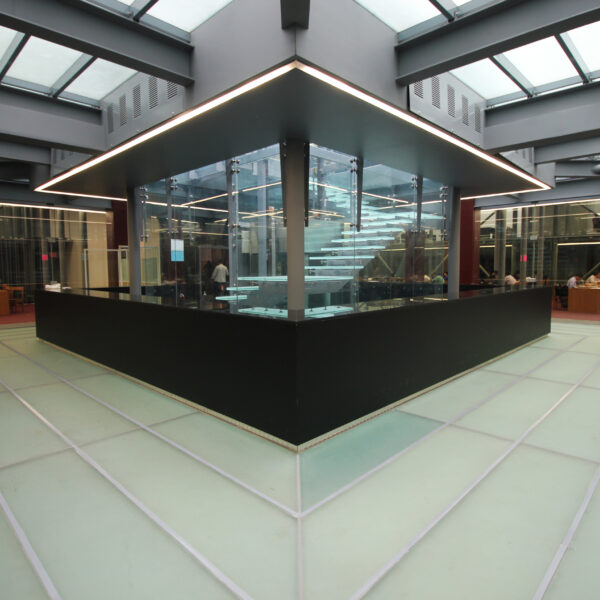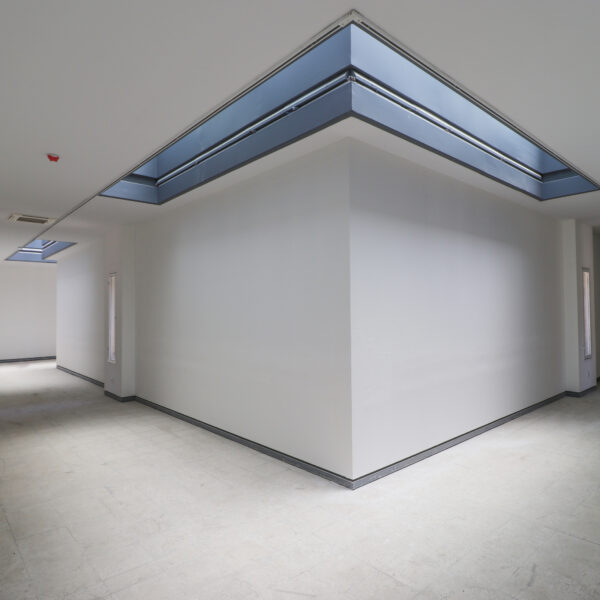In this project, we have taken on the responsibility of implementing one of the most unique and challenging university architecture projects in the country, a building that, unlike conventional structures, is not designed as an additional volume on the ground, but as part of the natural bed of the site.
The Library and Documentation Center of the Iran University of Science and Technology, designed by Dr. Farhad Ahmadi, is located in the heart of the earth with a sustainable and modest approach to maintain its coexistence with the surrounding environment.
Due to the outstanding, different architecture and unique details of the design, careful observance of design concepts and implementation principles in this project has been accompanied by various challenges.
Construction in the basement, with minimal destruction of the natural bed
One of the biggest challenges of this project is the implementation of a burial building with minimal impact on the surrounding environment and careful management of excavation and subsurface structures. We use advanced excavation and pit stabilization equipment to ensure that a safe and sustainable structure is implemented.
Creating natural lighting and void spaces
This project includes void spaces and roof lighting that require precise engineering calculations and flawless execution of concrete and glass elements in the roofs and skylights. Our execution team will implement these special structures in the best possible way, using modern formwork and precise concreting techniques.
Maintaining and revitalizing green space on the roof and grounds
In order to maintain the building’s connection with nature, the roof of the project has been designed as a roof garden. Advanced green roof systems have been used on this roof to create sustainable and maintainable vegetation.
Managing interference with surrounding buildings and university activities
Given the proximity of the project to buildings such as the university mosque, the entrance hall, and the computer science faculty, all stages of the implementation have been carefully planned to reduce noise and environmental disturbances.



